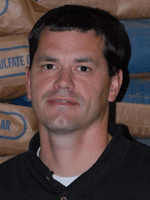
Don’t Lose Money With Too Many Replacements – Randy Greenfield
 By Randy Greenfield, Vita Plus dairy specialist
By Randy Greenfield, Vita Plus dairy specialistIs your heifer-raising operation a profitable one? How many heifers do you need to support your dairy herd’s turnover rate? Should you consider culling some of your youngstock?
If you are a Midwestern dairy producer, you’ve probably asked these questions recently. Historically, dairy producers have striven to maximize the number of heifer calves born on their farms, the number of heifers kept alive, and the number of heifers with a successful breeding outcome.
After all, “too many heifers” simply meant an extra, very profitable, cash crop. Producers that consistently sold extra springing heifers were likely good operators with excellent cattle.
In general, these characteristics haven’t really changed – it’s still a good thing to have low death losses and get heifers pregnant efficiently.
What has changed is the cost to raise a heifer. In recent years, we’ve seen a significant increase in this cost without an appreciable increase in the value of a springing heifer.
Add in the relatively recent effects of sexed semen use on many dairies and the scarcity of forages due to 2012’s drought and you’re looking at a potentially significant replacement cost issue.
I recently estimated costs to raise a heifer calf from birth to calving using current market value on all feedstuffs and estimates on all other costs from the University of Wisconsin Extension 2007 survey on heifer-raising costs. My total for all costs came to approximately $2,100 per head. If we add in just another $100 for the opportunity cost of selling the heifer calf at birth and the total cost for raising a heifer calf to 720 days today is a whopping $2,200.
While some top-end genetics may command values higher than $2,200 for a springing heifer, the market for springers in my area is currently running about $1,500 to $1,600. Growing extra heifers to sell as springers is not a profitable enterprise given today’s economics.
What about keeping them in the herd instead of selling them as springers? In a non-expanding herd, any heifers kept to replace cows beyond what is needed will simply increase the share of first-lactation heifers that make up the milk cow herd. This will decrease the average production of the herd, reduce parlor efficiency and reduce profits.
What does this mean for your dairy? Simply put, you probably shouldn’t grow any more heifers than you need to supply replacements for your dairy herd. Of course, this assumes that the current economic conditions will apply in the future as well.
Developing a plan to raise only the number of heifers that you need could be tricky, but must be done as opposed to blindly culling heifers to reduce replacement costs.
How many replacements do you need for your herd? Let’s use 500 cows for an example herd size. The next thing you need to predict is your turnover rate. How many cows will you cull from the 500 in your herd? This is a difficult number to predict with complete accuracy and will be different for every herd. I’ve seen annual turnover rates drop to 20 percent or slightly lower during times of expansion, so rates this low are attainable.
However, I would recommend estimating this number a bit on the high side as not having enough replacements and having to buy them may still be the bigger of two evils when considering genetics, biosecurity and other risks that come with bringing new animals into a closed herd. For our example, let’s use 30 percent for our predicted turnover rate.
That means we will need 150 heifers to replace our culled cows in the next year. We can then look at our inventory of calves and heifers and start culling accordingly, remembering that earlier culling will save the most cost.
Culling decisions can be made using many different criteria. The number of health treatments, genetics/pedigree, genomics, and weight gain data can all be used to sort the animals that will likely be the poorest performers if all were calved.
Longer term, even more options are available through your reproductive and calving programs to yield the number of heifer calves that you want to meet your replacement needs.
Strategic culling of the youngstock herd is one option to control replacement costs. Another could be to breed the bottom share of your heifers and/or cows to beef bulls to get calves that could be sold for a premium, guaranteeing that these animals won’t be kept and grown. Sexed semen could be used along with this strategy to increase the number of heifer calves from the top portion of the herd and allowing even more of the bottom to be bred to beef semen.
Even if you don’t think you are raising more replacements than you need, an analysis of your program can make good economic sense.
| Category: |
Business and economics Starting Strong - Calf Care |

